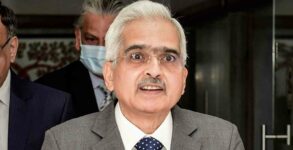Indian economy doing well: According to RBI Monetary Policy Committee (MPC) Member Ashima Goyal, the Indian economy has begun to perform well despite the unfavourable global environment since the Modi-led government carried out numerous reforms over the past nine years, improving important macroeconomic indices.
However, Goyal continued, there is still more work to be done before India can reach its full potential.
The UPA government benefited from an era of rapid economic expansion and inherited a robust economy.
However, she added, “overreaction to the post-2008 global financial crisis and numerous corruption scandals weakened the economy.”
Goyal was questioned on how she would contrast the nine years of the Modi-led NDA government’s tenure with the ten years of the UPA government’s tenure (2004–14).
According to her, “the (Modi-led) NDA inherited double deficits (high fiscal deficit and high current account deficit), high inflation, and weak banks, but has improved all these and implemented other reforms so that the economy has begun to do well now even in an unfavourable global environment.”
In May 2014, Prime Minister Narendra Modi took up his position. In the 2019 Lok Sabha elections, Modi guided the Bharatiya Janata Party (BJP) to a majority of its own.
Regarding the assertion by some US-based economists that India’s economic growth is overstated, Goyal argued that it is foolish to extrapolate too far from quarterly figures that are impacted by seasonal and base effects as well as measurement problems.
The base effect from the sharp decline in growth to -23.2 in Q1 FY21 during the pandemic is what makes Q1 growth so high.
She said, “Growth recovered to 21.6 in Q1FY22, 13.1 in Q1FY23, and 7.8 in Q1 FY24.”
India’s internet economy to grow 6-fold to USD 1 trillion by 2030: Report
Indian economy doing well even in unsupportive global environment
India’s GDP grew by 7.8% in the April–June 2023–2024 period, the highest rate in the previous four quarters, according to data released last month.
She said that the similar annual rates of growth in the previous three fiscal years were 6.6%, 9.1%, and 7.2%. She added that although the base effect is gradually disappearing, this does not indicate that growth is slowing.
She asserted that “all manner of data indicators suggest growth is robust” and that yearly growth of more than 6% is great during a global decline.
Goyal noted that some Indian-origin economists working in the US had claimed that persistent structural defects were to blame for the decline in Indian growth in the 2020s, but he said that India’s strong post-pandemic recovery has disproved their claims.
She claimed that if India had underlying issues, it would not have fared as well despite ongoing global shocks.
“They (US-based economists) are wrong again in grasping at straws in quarterly growth rates,” she added, adding that growth rates have been revised upward after the epidemic as better data has come in, not downward as they had anticipated.
Because of the increasing economic diversity, resiliency, strength, and efforts of so many Indians as well as policies that are absorbing shocks, the prominent economist claimed that Indian growth is sustainable.
Last week, the Finance Ministry also rejected claims that the GDP was overstated, claiming that it had consistently computed economic growth using income side estimates. It also emphasised that many international agencies had revised their forecasts upward in light of the first quarter’s data.
The ministry had stated that the critics should have used other data to evaluate the development, such as purchasing managers’ indexes, bank loan growth, an increase in capital investment, and consumption patterns.
According to the Income or Production Approach, the real GDP of India increased by 7.8% in Q1 FY24 over the same period last year.
In a recent paper, Arvind Subramanian, a former chief economic advisor, suggested that India’s GDP is actually calculated from the productivity side rather than the expenditure side.
Earlier this month, Chief Economic Advisor V Anantha Nageswaran rejected criticism of ”statistical discrepancy” in the first quarter GDP data, claiming that when the same statistical authority reported the most severe contraction in the first quarter of 2020, the doubters had called it credible because it fit their narrative.

















